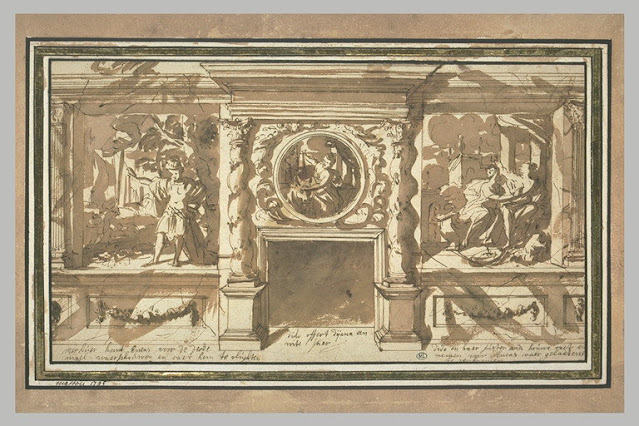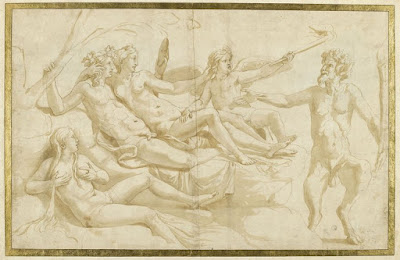 |
| Antonio Zanchi Sisyphus ca. 1660-65 oil on canvas Mauritshuis, The Hague |
 |
| Andrea Vaccaro King Midas (with Ass's Ears) before 1670 oil on canvas private collection |
 |
| Orazio Samacchini Athena instructing Ulysses on presenting himself before King Alcinöus before 1577 drawing Musée du Louvre |
 |
| Corneille van Clève Polyphemus seated on a Rock ca. 1681 marble- Musée du Louvre |
 |
| Sébastien Bourdon Birth of an Olympian God before 1671 drawing Musée du Louvre |
 |
| Louis Boullogne the Younger The Muses Urania and Melpomene ca. 1680-81 oil on canvas Chåteau de Versailles |
 |
| Michel Dorigny Study for the Muse Urania before 1665 drawing Musée du Louvre |
 |
| Giovanni Battista Bertani Actaeon transformed into a Stag ca. 1560 drawing Musée du Louvre |
 |
| Alexandre Rocher Diana and Actaeon 1772 enamel miniature Musée du Louvre |
 |
| Jacob Jordaens Model posed as Silenus ca. 1639 drawing (study for painting) Musée du Louvre |
 |
| Bartolomeo Passarotti Mask of Silenus before 1592 drawing Musée du Louvre |
 |
| Giulio Romano Fall of Icarus ca. 1536 drawing Musée du Louvre |
 |
| Giulio Romano Atlas supporting the Earth ca. 1532-34 drawing Musée du Louvre |
 |
| Paolo Farinati Salmacis and Hermaphroditus before 1606 drawing Musée du Louvre |
 |
| attributed to Girolamo Siciolante Offerings to Vertumnus and Pomona ca. 1540-45 oil on panel Galleria Borghese, Rome |
 |
| Charles-Joseph Natoire Sleeping Adonis ca. 1750 drawing (study for painting) Musée du Louvre |
Recollections in Mid-Afternoon
The traveler who slew the dragon
always came from the sun;
and this had meanings of women
and water, seeds, and rain.
In the North the traveler was Tristan.
He was paler. And because by profession
the Northmen are pirates,
there are many ships in his story.
That traveler was brutal and sweet. He
spoke July in a language
gayer than awnings;
he intoned the tender blue,
the winds, and the rocking fields.
His motion gilded the circle
that closes the western lands. The virgin
saw on the ocean his shadow.
Perseus, all purple with blood and applause,
married, and learned the culture of the place.
The drums awoke to his coming –
incantations to the earth. Our lives
fruit for him; violence
the prime fruit, pomegranate by plain pear, we
and our heroes ripened in his splendor.
He darkened to midnight through Egypt,
drawing the River behind him
to Hades. The crocodiles
hid from the heat in the hollows;
mice were born of the marshes.
– Harold Rosenberg (1934)















































